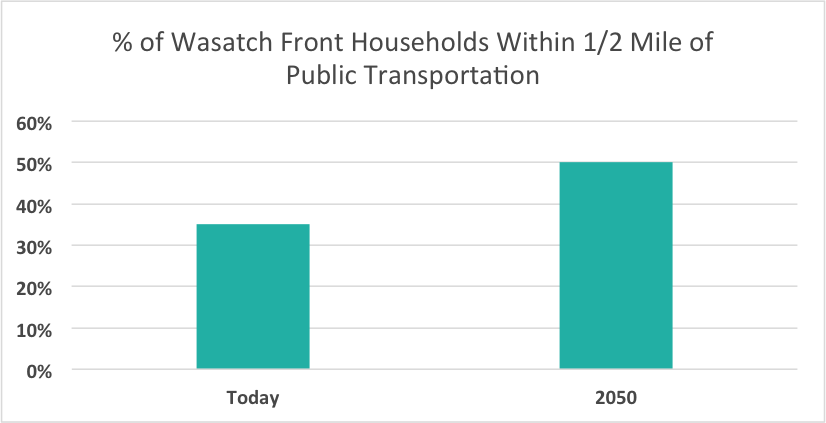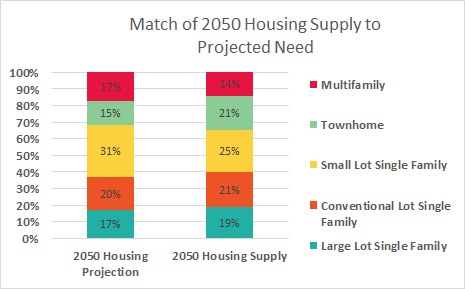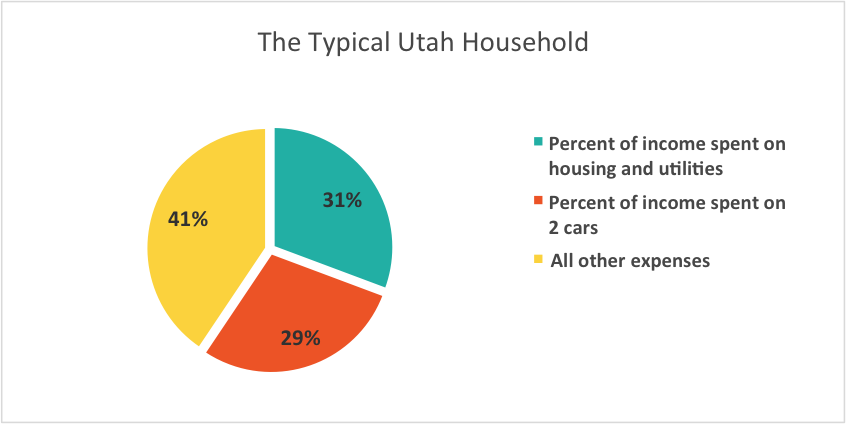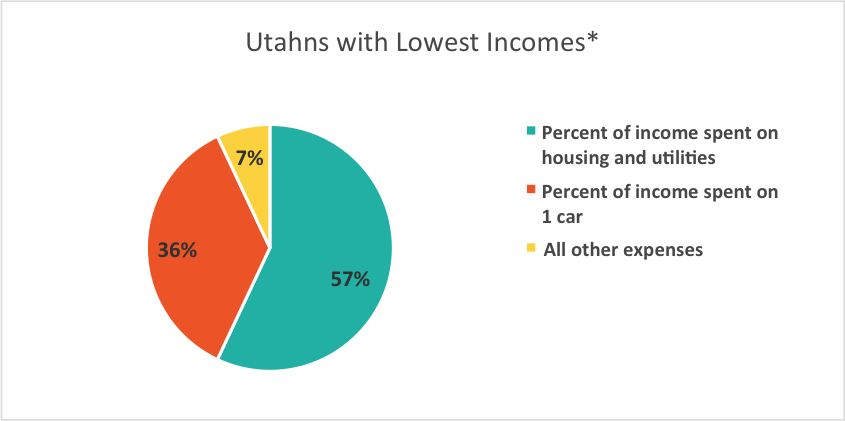The Story
By 2050, Utahns live in a variety of types of housing. Communities supply a wide range of housing options that match what Utahns want and can afford. Most people live close to walkable “centers,” where they can access jobs, shopping, and recreation. As a result:
- Utahns spend less on housing and transportation and more on other needs.
- Fewer people require public assistance for housing and other needs.
- Many people with low incomes can afford to live in mixed-income communities, increasing their access to opportunities like good schools.
- Transportation costs are low because many Utahns live close to public transportation and can easily walk, bike, or drive short distances to destinations.
Results
- Half of households along the Wasatch Front are close to high-frequency public transportation.

- Housing supply highly matches what people can afford.

- The average household spends $18,524 per year for transportation.
- Local infrastructure (roads, water, sewer, etc.) costs $24,593 per household.
- 85% of households are within one mile of a center with daily services.
Background
Reasonably priced housing and an affordable cost of living are vital for maintaining a high quality of life and improving Utah’s economy. Utahns spend a significant portion of their monthly budgets on housing and transportation. The less we spend on these needs, the more we have left to spend on other goods and services. As housing and transportation costs rise, more Utahns have difficulty finding a decent place to live and meeting monthly expenses without public assistance. However, if the cost of living is affordable, Utahns are more likely to stay and workers and employers are more likely to come to the state, improving Utah’s economy.
Housing Costs
To maintain affordable housing, the supply of housing types must match Utahns’ wants and incomes. If Utahns desire to live in a housing type (such as townhomes or apartments) that is in short supply, housing costs will increase for many. Providing a variety of housing options helps ensure that everyone has a good, affordable place to call home. Supplying the right mix of housing is challenging, however, because people’s housing needs evolve as their family size, income, job locations, or other circumstances change. In addition, Utahns’ demand for housing is changing as Baby Boomers age, average family size decreases, land for housing near job centers becomes less available, and market preferences change.
Increased costs for local infrastructure like roads and pipes can also increase the price of housing, because these expenses are typically passed on to homebuyers and renters, or included in tax bills.
Transportation Costs
Transportation costs are also a large part of a typical family’s budget. These costs are determined by how close housing is to jobs and daily needs and by the availability of good public transportation. If Utahns can drive less and own fewer or no vehicles, transportation costs will lower.




